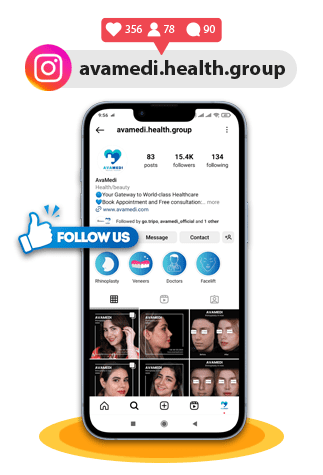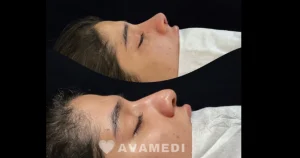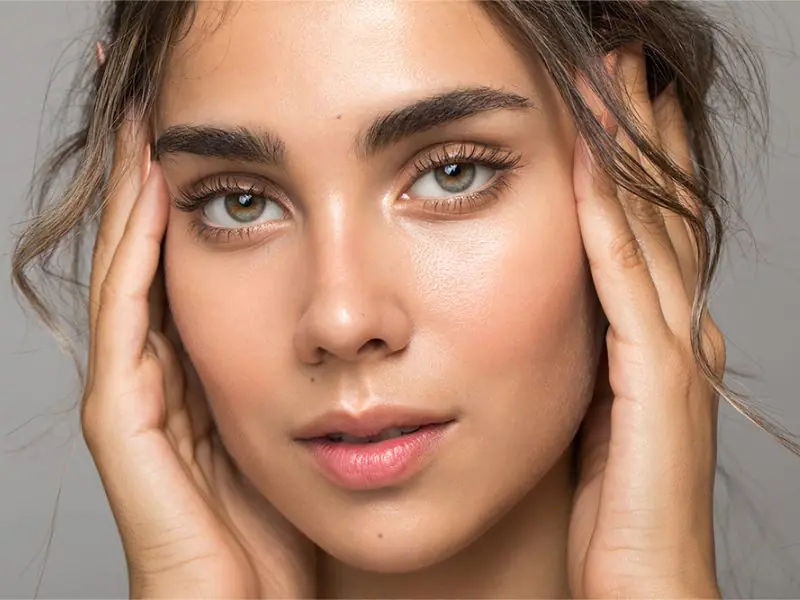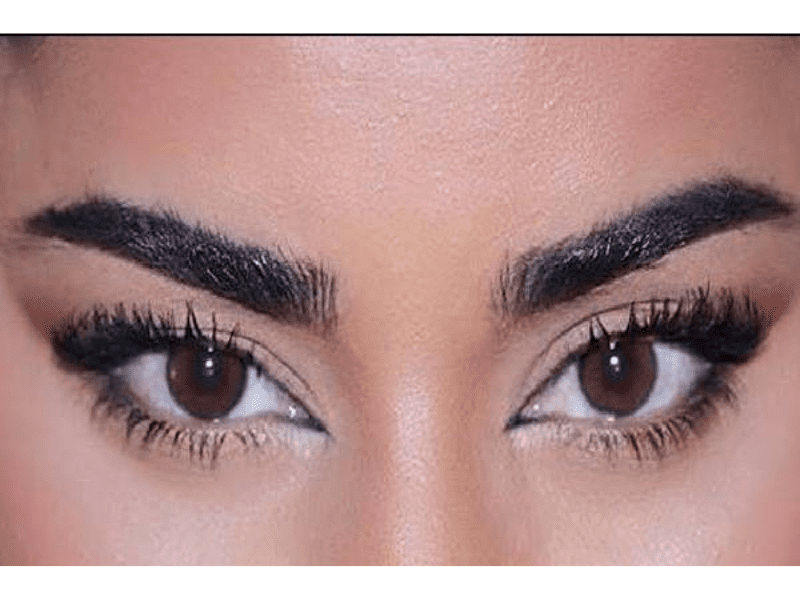What is cat eye surgery?
Cat eye surgery, also known as a “cat eye lift” or “fox eye surgery,” is a cosmetic procedure designed to create an elongated and lifted appearance to the eyes. The goal is to mimic the shape of a cat’s or fox’s eyes, giving the outer corners of the eyes a more upward slant.
Some surgeons may also combine this surgery with other procedures like blepharoplasty (eyelid surgery) to further enhance the overall appearance of the eyes.
It’s important to note that any surgical procedure, including Cat eye surgery in Iran, carries potential risks and complications. It’s crucial to consult with a qualified and experienced plastic surgeon who can evaluate whether this procedure is suitable for an individual and discuss the potential risks involved.
Fox eye vs cat eye surgery
“Fox eye” and “cat eye” surgeries are both cosmetic procedures aimed at altering the appearance of the eyes, but they have some differences in technique and the desired outcome they achieve:
Cat Eye Surgery:
- Goal: Cat eye surgery aims to create an elongated and lifted appearance to the eyes, mimicking the shape of a cat’s eyes.
- Technique: This procedure typically involves lifting the outer corners of the eyes to create an upward slant. It may use techniques like thread lifts, surgical tape, or other minimally invasive methods to achieve the desired look.
- Outcome: The result of cat eye surgery is an eye shape that is elongated and lifted, giving a more feline-like appearance to the eyes.
Fox Eye Surgery:
- Goal: Fox eye surgery, also known as “snatched eye” or “designer eye shape,” aims to create a lifted and slanted eye appearance similar to that of a fox.
- Technique: This procedure focuses on lifting the outer corners of the eyes and creating a more pronounced upward slant. It may involve techniques such as thread lifts, surgical tape, or even surgical incisions to achieve the desired eye shape.
- Outcome: The result of fox eye surgery is an eye shape that appears more slanted and lifted, often with a more pronounced tilt towards the temples, resembling the eyes of a fox.
Cat eye surgery gone wrong
Complications from any surgery, including cat eye surgery, can occur despite precautions and skilled surgeons. Some potential issues or complications that could arise include:
- Infection: Post-operative infections may happen despite preventive measures. Signs include increased redness, swelling, warmth, or discharge from the incision site.
- Asymmetry: Achieving perfect symmetry in cosmetic procedures can be challenging. Sometimes, there might be a noticeable difference between the eyes after surgery.
- Scarring: Scarring can occur, especially if the healing process doesn’t go as expected or due to individual healing patterns.
- Nerve Damage: Temporary or, in rare cases, permanent nerve damage might affect eyelid function, causing issues like drooping or difficulty closing the eyes completely.
- Overcorrection or Undercorrection: Sometimes, the intended lift might be too much or too little, leading to dissatisfaction with the aesthetic outcome.
- Allergic Reactions or Adverse Reactions: Reactions to anesthesia, sutures, or other materials used during surgery could occur.
- Persistent Swelling or Bruising: Some individuals might experience prolonged swelling or bruising that takes longer than expected to resolve.
- Vision Issues: While uncommon, complications affecting vision like dry eyes, blurred vision, or sensitivity to light can occur temporarily.
- Dry Eyes: Some individuals might experience temporary dryness or irritation in the eyes due to changes in tear production or the healing process.
- Sensitivity to Light: Increased sensitivity to light might occur temporarily following the surgery.
- Tearing: Excessive tearing or watering of the eyes might happen during the initial recovery period.
If someone experiences complications or is unhappy with the results of their cat eye surgery, it’s crucial to contact their surgeon immediately. In many cases, issues can be addressed and corrected with appropriate medical attention. Revision surgery or other corrective measures may be necessary depending on the nature and severity of the complication. Seeking guidance from a qualified surgeon or specialist is essential in such situations.
Cat eye surgery vet
After undergoing cat eye surgery, post-operative care is crucial for proper healing and optimal results. Here are some general care guidelines that may apply, but it’s important to follow your surgeon’s specific instructions:
- Follow Post-Op Instructions: Your surgeon will provide detailed post-operative instructions. Follow them diligently regarding wound care, medication, and activity restrictions.
- Use Prescribed Medication: Take any prescribed medications, such as pain relievers or antibiotics, as directed by your surgeon to manage discomfort and prevent infection.
- Apply Cold Compresses: Cold compresses can help reduce swelling and discomfort. Your surgeon may recommend using them intermittently for the first few days post-surgery.
- Protect Your Eyes: Avoid rubbing or touching your eyes. Use protective eyewear, if advised, to shield your eyes from irritants, sunlight, or accidental contact.
- Avoid Strenuous Activities: Refrain from strenuous activities, heavy lifting, or activities that could strain the eyes during the initial recovery period.
- Attend Follow-Up Appointments: Attend all scheduled follow-up appointments with your surgeon. These visits are crucial for monitoring healing progress and addressing any concerns.
- Maintain Proper Hygiene: Keep the surgical area clean and dry. Follow instructions for cleaning the area around the eyes if necessary.
- Limit Sun Exposure: Protect your eyes from excessive sun exposure by wearing sunglasses when outdoors. Sunlight can irritate the eyes during the healing process.
- Monitor for Complications: Watch for signs of infection, such as increased redness, swelling, or discharge from the incision site. Contact your surgeon immediately if you notice any concerning symptoms.
- Be Patient with Recovery: Allow time for proper healing. It may take several weeks for swelling and bruising to subside, and for the final results to become apparent.
Cat eye surgery celebrities
Several celebrities have been associated with or rumored to have undergone procedures that alter the appearance of their eyes, including what’s often referred to as “cat eye surgery.” However, it’s important to note that information about celebrities’ cosmetic procedures is often speculative, and they may not confirm or deny such procedures publicly.
Some celebrities who have been rumored to have had surgeries or treatments to achieve a cat eye appearance or lift around their eyes include:
- Bella Hadid: The model has been rumored to have undergone procedures to achieve a more lifted and elongated eye appearance.
- Kendall Jenner: Similar to Bella Hadid, Kendall Jenner has been speculated to have a cat eye or fox eye appearance, though she has not confirmed any specific procedures.
- Megan Fox: Known for her distinctive eyes, Megan Fox’s appearance has sparked speculation about potential procedures to achieve a more slanted or lifted eye appearance.
- Ariana Grande: The singer’s appearance has led to speculation about potential cosmetic enhancements, including a more elongated eye shape.
- Beyoncé: While not confirmed, Beyoncé’s eye shape has led to rumors about cosmetic procedures to achieve a cat eye appearance.
It’s important to approach such information with caution as many celebrities’ appearances are also influenced by makeup techniques, lighting, angles, and other factors besides cosmetic surgeries. Additionally, individuals in the public eye may choose not to disclose or confirm details about their cosmetic procedures for personal reasons.
Cat eye surgery cost
The cost of cat eye surgery can vary significantly based on several factors, including the surgeon’s expertise, geographic location, specific techniques used, facility fees, pre-operative evaluations, anesthesia, and post-operative care.
On average, cat eye surgery costs can range from a few thousand dollars to several thousand dollars. However, it’s essential to consult directly with a qualified plastic surgeon or oculoplastic surgeon to get an accurate estimate tailored to individual needs.
Factors that might influence the cost of cat eye surgery include:
-
Surgeon’s Experience and Reputation:
- Highly experienced and reputable surgeons often charge higher fees for their expertise.
-
Geographic Location:
- Surgical costs can differ based on the region or city where the procedure is performed due to variations in living costs and demand for cosmetic procedures.
-
Surgical Technique:
- Different techniques might be used to achieve the desired cat eye appearance, and the complexity of the procedure can affect the cost.
-
Facility Fees:
- Fees associated with the surgical facility or hospital where the procedure is performed can contribute to the overall cost.
-
Pre- and Post-Operative Care:
- Consultations, pre-operative evaluations, and follow-up appointments may be included in the overall cost.
It’s crucial to inquire about the breakdown of costs during the consultation with the surgeon. Additionally, ask about any potential additional fees that might not be included in the initial estimate. Some surgeons also offer financing options to help patients manage the cost of cosmetic procedures. Always choose a qualified and experienced surgeon rather than making decisions based solely on cost to ensure safety and desired results.
Cat eye surgery recovery
The recovery process after cat eye surgery involves several stages, and the duration and specifics can vary based on individual healing factors and the surgical technique used. Here’s a general timeline of what to expect during the recovery period:
Immediate Post-Surgery (Days 1-2):
-
Swelling and Bruising:
- Swelling and bruising around the eyes are common and might peak within the first 48 hours.
-
Discomfort:
- Mild to moderate discomfort or pain around the surgical area is normal. Pain medication prescribed by the surgeon can help manage this.
-
Rest:
- It’s crucial to rest with your head elevated to minimize swelling.
First Week:
-
Cold Compresses:
- Applying cold compresses intermittently can help reduce swelling.
Two Weeks to a Month:
-
Swelling and Bruising:
- Swelling and bruising typically begin to decrease, but some residual swelling might persist for a few weeks.
-
Return to Normal Activities:
- You might gradually resume normal activities, but avoid activities that might stress the eyes.
Long-Term Recovery (Several Months):
- Final Results: It might take several months for the final results to become apparent as swelling subsides completely.
- Throughout the recovery period, it’s essential to:
- Follow a Healthy Lifestyle: Maintain a healthy diet, stay hydrated, and avoid habits that might hinder healing, such as smoking.
- Every individual’s recovery timeline might vary based on their body’s response to surgery.
How long does a cat eye surgery permanent?
Cat eye surgery, also known as a cat eye lift or fox eye surgery, is a cosmetic procedure aimed at altering the appearance of the eyes to achieve a more lifted and elongated look. However, it’s important to note that the permanence of the results can vary from person to person and might not be considered entirely permanent for everyone.
The longevity of the results depends on several factors:
- Individual Factors: Each person’s anatomy, skin elasticity, and natural aging process can affect how long the results last. Some individuals may experience longer-lasting effects due to their unique characteristics.
- Techniques Used: The specific techniques employed during the surgery can influence the longevity of the results. While the aim is to create a more lifted appearance, the degree of lift achieved and how well it holds over time can vary based on the surgical approach.
- Aging and Lifestyle: Natural aging and lifestyle factors, such as sun exposure, smoking, and changes in weight, can impact the longevity of the results. Over time, there might be gradual changes in the appearance of the eyes due to these factors.
- Touch-Up Procedures: Some individuals might opt for touch-up procedures or revisions to maintain or enhance the results as needed.
While cat eye surgery can produce long-lasting results, it might not be considered a permanent alteration. The effects can gradually change over time due to natural aging and other factors. The duration of the results can vary from several years to longer periods, depending on individual circumstances.
Consulting with a qualified plastic surgeon or oculoplastic surgeon can provide more personalized information about the expected duration of the results based on your specific case and the chosen surgical approach.
Source:cleveland clinic
What are the benefits of cat eye surgery?
The cat eye or foxy eyes procedure offers a key advantage: enhancing the appearance of the eyes. This transformation can create a more youthful, rejuvenated look, fostering a sense of alertness and vitality.
Does cat eye surgery last?
A canthoplasty offers a long-lasting solution for lifting the eyes, often considered the most enduring method. Typically, patients can anticipate results lasting a minimum of ten years or longer. Nonetheless, it’s important to note that while plastic surgery can provide lasting effects, it doesn’t entirely halt the natural aging process.
How much does Canthoplasty cost in Iran?
Cat eye surgery in Iran typically ranges from $1000 to $3500, a notably lower cost compared to the USA, where canthoplasty starts at $5000, and Turkey, where it begins around $2500.
Which country is best in eye surgery?
The top countries for eye surgery worldwide include:
The United States, known for pioneering advanced eye care;
Germany, recognized for precision and expertise;
South Korea, a leader in ophthalmic technology;
India, offering quality eye care at accessible prices;
Thailand, blending healthcare with hospitality;
And Japan, renowned for its advanced eye care technologies.
What is the most successful eye surgery?
LASIK eye surgery stands as the most widely recognized and frequently conducted laser refractive procedure aimed at addressing vision issues. Laser-assisted in situ
keratomileusis (LASIK) serves as an option to reduce reliance on glasses or contact lenses.
What is the most advanced eye surgery?
Contoura LASIK represents the pinnacle of contemporary laser eye surgery. Referred to as T-CAT or Topography-guided Custom Ablation Treatment, this procedure showcases the culmination of refined techniques mastered by leading eye surgeons who have selected the most potent tools for the task at hand.
How risky is Canthoplasty?
While every surgical procedure carries risks, significant complications arising from Canthoplasty are exceptionally rare. Common occurrences during the initial weeks after surgery include swelling and bruising. Additionally, you might encounter symptoms like dry eyes, excessive tearing, and temporary blurred vision in the early post-operative period.
Is Iran good for plastic surgery?
Iran stands as a prominent hub for cosmetic surgery, offering top-tier surgical procedures at significantly lower costs compared to wealthier nations such as the US, the UK, or Switzerland. With a pool of highly skilled cosmetic surgeons, Iran adeptly meets the needs of both local and global demand for cosmetic procedures.
What is the newest eye surgery?
In 2022, the FDA granted approval for the EVO Visian ICL (Implantable Collamer Lens) to address nearsightedness in individuals dealing with moderate to severe myopia, with or without astigmatism. In contrast to LASIK surgery, which alters the cornea’s shape, the placement of this permanent implantable contact lens does not modify the corneal shape.




















